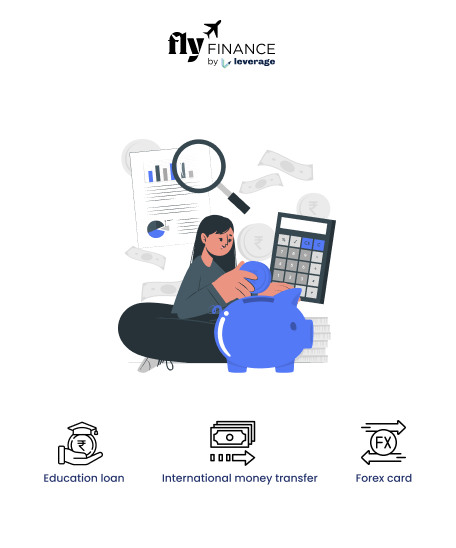Spotting Fake 100 Dollar Bills in Canada can be very easy if you are aware of the features of the note. As an international student studying in Canada, handling foreign currency can be difficult, especially when dealing with unfamiliar notes like the Canadian 100-dollar bill. You may accept a fake note during currency exchange in Canada if the service provider is not reliable. Counterfeit currency is a growing concern identifying fake bills is essential to avoid financial losses or legal complications. Let’s check and understand all the details on counterfeit or fake 100-dollar bills in Canada.
Table of contents
What is the Fake 100 Dollar Bill in Canada?
A fake 100-dollar bill in Canada is a counterfeit or fake version of a genuine Canadian 100-dollar note. The sole purpose of this currency is to imitate the real currency. These bills are made with lower-quality materials and may have errors such as missing holograms, incorrect colours, or blurred images. 100 Dollar Bill in Canada is embedded with advanced security measures like polymer texture, transparent windows, raised ink etc which can help people differentiate between real and counterfeit notes.
Also Read: Check here all about education loan to study in Canada without collateral
Key Features of the Canadian 100-Dollar Bill
The Canadian 100-dollar bill is made of durable polymer. This is one of the major features and an easy indicator of genuine currency. Other major elements include a transparent window raised ink, a holographic strip etc. Check the details of all the key features of the Canadian 100-dollar bill in the table below:
| Canadian 100-Dollar Bill | Key Features |
| Polymer Material | Unlike INR, Canadian bills are made of polymer. The texture should feel smooth and not like regular paper. A fake bill may feel too stiff or too soft. |
| Transparent Window | Every CAD 100 bill has a transparent window with a metallic image of the Bank of Canada building and a portrait of Robert Borden. Check if this window is clear and doesn’t have any blurry printing. |
| Raised Ink | The large number “100” and the words “Bank of Canada” in both English and French should have raised ink. You can check the authenticity by rubbing your fingers over these parts to feel the texture. |
| Holographic Strip | The bill contains a holographic strip that runs through the whole surface. This should display changing colours and images of the number “100” and Canada’s coat of arms when tilted under the light. |
| Ghost Image | To check the ghost image, hold the bill up to light to reveal a hidden picture of Robert Borden in the transparent window. If this image is missing or appears unclear, the bill might be counterfeit. |
Common Signs of Fake 100 Dollar Bills in Canada
It is very difficult to create fake currency as the security features are very unique. Counterfeiters still manage to produce fake notes but they miss out on a lot of things. Check some of the common signs of Fake 100 Dollar Bills in Canada so that you can differentiate between original and fake currency:
- Fake bills often have slight colour variations. Genuine Canadian 100-dollar bills have vibrant and consistent colours.
- The fine details on a real bill are sharp. On a fake note, you might notice blurry images, especially in the transparent window or holographic strip.
- Counterfeit bills often have missing features such as raised ink, holographic details, or clear ghost images.
- Check if any of these essential components are absent or placed incorrectly.
Also Read: Planning to pursue law in Canada? Check here for some of the best law scholarship in Canada.
What to Do If You Receive a Fake 100 Dollar Bill in Canada?
There can be situations where you receive Fake 100 Dollar Bills in Canada. In such cases, do not panic and think of a solution so that the fake note can’t get circulated again in the economy. You can also avoid these cases by using digital payment modes such as Forex cards. A lot of banks offer some of the best Forex cards for students. Check some of the easy and effective solutions to deal with fake notes below:
- Never attempt to pass on a counterfeit bill because it is illegal and could lead to serious legal consequences.
- Contact the Canadian local law enforcement or visit the nearest police station to report the counterfeit note. You can also notify your bank, as they may provide further assistance
- Stay informed about the security features of Canadian currency. Many Canadian banks provide brochures and online tools to help people recognise genuine bills.
International students studying in Canada often engage in various part-time jobs and get paid in cash. So it is important to stay informed about all the features of a genuine currency. Check some common FAQs based on the same below:
FAQs
To spot a fake 100-dollar bill, you need to check for key security features like the transparent window, raised ink, holographic strip, and a ghost image of Robert Borden.
If you suspect a bill is counterfeit, do not use it. Immediately report it to local law enforcement or visit the nearest police station.
To avoid counterfeit bills, exchange currency at authorised dealers, banks, or ATMs. Licensed institutions follow strict regulations and ensure that the money you receive is authentic.
Counterfeit detection pens can help with paper notes but they may not be reliable for Canada’s polymer 100-dollar bills. It’s better to rely on the bill’s built-in security features.
Unknowingly possessing a counterfeit bill is not illegal, but it’s important to report it as soon as you realise it’s fake.
To know more about education loans, the best bank accounts for students, forex and banking experience for global students or international money transfers, reach out to our experts at 1800572126 to help ease your study abroad experience.
Follow Us on Social Media





























